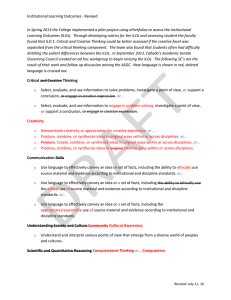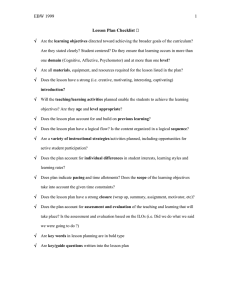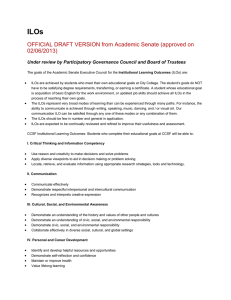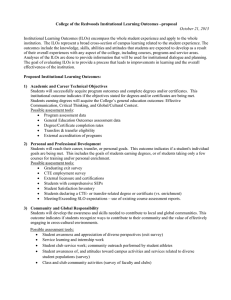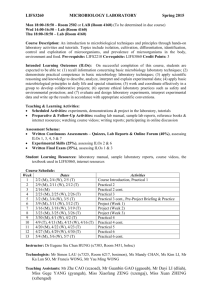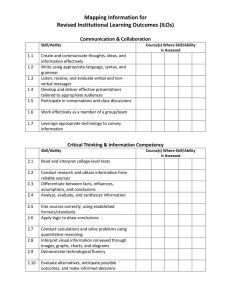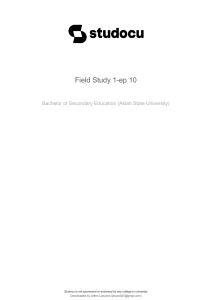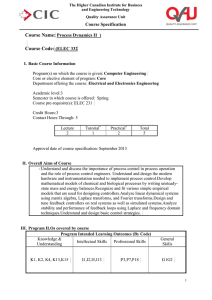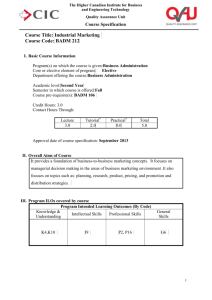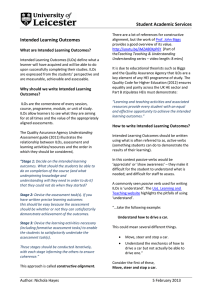Institutional Learning Outcomes - Revised
advertisement
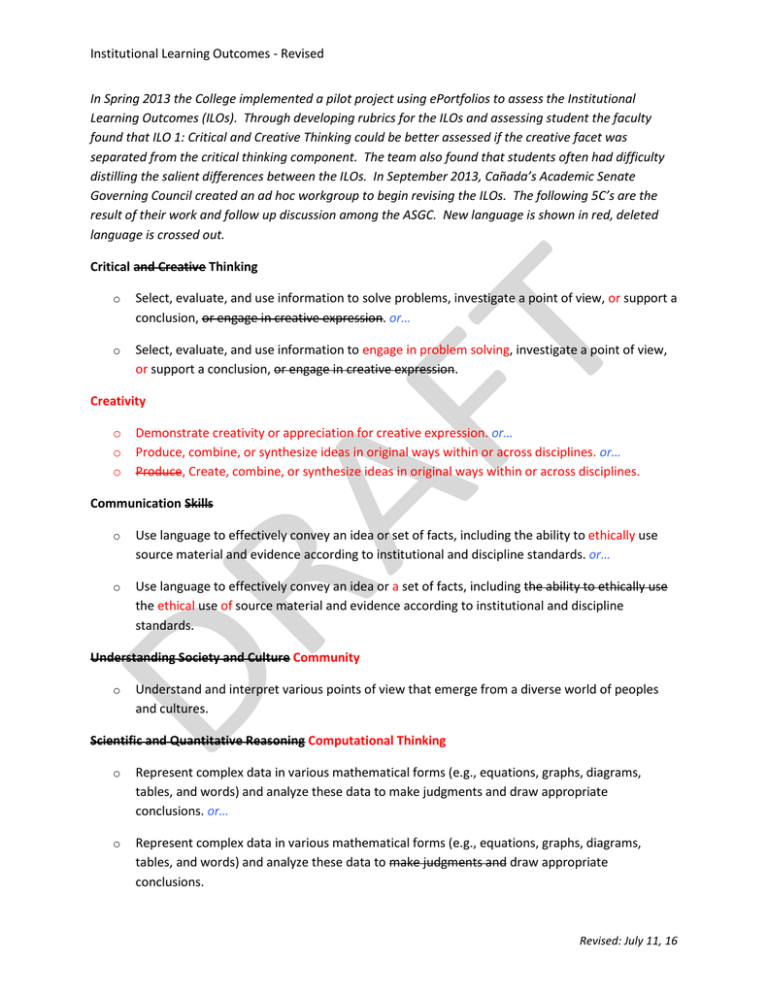
Institutional Learning Outcomes - Revised In Spring 2013 the College implemented a pilot project using ePortfolios to assess the Institutional Learning Outcomes (ILOs). Through developing rubrics for the ILOs and assessing student the faculty found that ILO 1: Critical and Creative Thinking could be better assessed if the creative facet was separated from the critical thinking component. The team also found that students often had difficulty distilling the salient differences between the ILOs. In September 2013, Cañada’s Academic Senate Governing Council created an ad hoc workgroup to begin revising the ILOs. The following 5C’s are the result of their work and follow up discussion among the ASGC. New language is shown in red, deleted language is crossed out. Critical and Creative Thinking o Select, evaluate, and use information to solve problems, investigate a point of view, or support a conclusion, or engage in creative expression. or… o Select, evaluate, and use information to engage in problem solving, investigate a point of view, or support a conclusion, or engage in creative expression. Creativity o o o Demonstrate creativity or appreciation for creative expression. or… Produce, combine, or synthesize ideas in original ways within or across disciplines. or… Produce, Create, combine, or synthesize ideas in original ways within or across disciplines. Communication Skills o Use language to effectively convey an idea or set of facts, including the ability to ethically use source material and evidence according to institutional and discipline standards. or… o Use language to effectively convey an idea or a set of facts, including the ability to ethically use the ethical use of source material and evidence according to institutional and discipline standards. Understanding Society and Culture Community o Understand and interpret various points of view that emerge from a diverse world of peoples and cultures. Scientific and Quantitative Reasoning Computational Thinking o Represent complex data in various mathematical forms (e.g., equations, graphs, diagrams, tables, and words) and analyze these data to make judgments and draw appropriate conclusions. or… o Represent complex data in various mathematical forms (e.g., equations, graphs, diagrams, tables, and words) and analyze these data to make judgments and draw appropriate conclusions. Revised: July 11, 16
